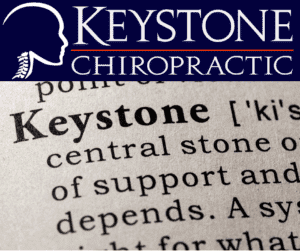We recently changed our name to Keystone Chiropractic and some of our patients have since asked: “Why Keystone?”
 Keystone definition
Keystone definition
~the central principle or part of a policy, system, etc., on which all else depends.
~Cornerstone, foundation, basis, linchpin, cornerstone, base, principle, guiding principle, core, heart, center, crux, fundament, mainspring, priority.
There are many ways that Upper Cervical practices describe themselves. Before we re-branded, we had been Upper Cervical Health Centers of America & Upper Cervical Springfield; others have been Advanced, Apex, or Atlas Chiropractic to name a few. While all of these words convey WHAT we do, it doesn’t often convey WHY we do it.
If you understand the nature of the human body, you get it. But let’s face it, you’re reading this because you either wanted to know why we changed our name after 12 years of practice or you just happened upon this page and are the type of person who wants to learn more naturally. If you’re still reading, Thank You! If you’re just curious about the ramblings of an engineer who didn’t get why the atlas and the cranio-cervical junction were so important as he embarked on a journey to a new profession, you’re probably not alone. We’ll get back to that in a moment.
What KEYSTONE means to the body
When I think about the body from an engineering and structural standpoint, I look at two things:
First, how does something move relative to another piece? Second, where are the weak links in the chain?
Let’s start with the weak links in the chain.
If you’ve ever twisted your ankle, you know that the ligaments on the outside of your ankle are prone to injury. They’re not inherently weak, but they are not designed to take on certain forces.
The same holds true for the ligaments that hold that top of your neck in place. Unlike the rest of the body, the first two segments in your neck do not have interlocking joints like the rest of the spine or a big ole-disc that firmly attaches above and below it. These first two segments are held in place solely by muscles and ligaments that are prone to injury & accident, especially in our modern world.
Modern cars are made of plastics that don’t break when they get hit by another car. If you’ve EVER been in an accident that didn’t seem to have any damage, guess again. Your car may not have been damaged, but your body felt it. It happened so fast that you didn’t even notice it. It takes 250 milliseconds to physically respond to something you see, and most accidents happen faster than that. The weight of a car (2600-lbs for a small car, 4400-lbs or more for a larger car) creates forces you’re not prepared for, which will ultimately travel to your weakest link, your upper neck.
While not all accidents involve a car, even minor accidents like falling off your bike when you were growing up, or jumping out of a tree or barn door (or even slipping on ice!) will be enough to jar your neck and atlas to start causing trouble.
So, how does your head move relative to the neck?
Structurally, your head is attached to your body by your neck, especially these first two segments, the atlas and axis. These segments are the keystone; the provide the support and define how your head interacts with your body in a gravity environment. While our eyes maintain our perception to the horizon and our inner ears maintain our perception to gravity, it’s our neck that maintains our perception to our body. Our brain will always try to make sure all three agree. If the eyes and ears agree, but the relationship between our head and neck are out of place, the body will contort underneath itself to maintain the relationship of the head to our gravity environment.
Those shifts can lead to a whole host of health problems, like neck, shoulder, hip, leg and/or back pain to headaches, numbness and tingling, or loss of strength. This doesn’t even address the stress that’s placed on the spinal cord from these shifts in position of the top two segments. What some may call a misalignment or subluxation, we call neuro-structural shifts. This is also why we view the atlas and axis area as the Keystone to your body’s ability to function normally.
Meniere’s, Migraines, asthma, fertility, digestive – EXPAND on whole host of health problems, build on abnormal. What are abnormal function vs normal function.
But we’re not just mechanical, as we have both neurological & chemical processes that go in our bodies that interact with our structure.
The leap from Engineering to Chiropractic
I practiced engineering for 7 years, and was “in-the-field” for most of that time. If you have any experience in a profession, you know there are vastly different experiences between learning something on paper (i.e. a classroom) vs practical application. There are things you simply can’t be taught; they must be learned for yourself.
If I was still doing engineering, I would be considered a systems engineer. I was the guy who learned the operation of a system from front to back. Even if my robots (which were my main focus) weren’t part of the system further up or down the line, I found the more I knew about the WHOLE process, the more I could fine tune my robots to be more effective for the system as a whole.
Technically, I’m still doing engineering; the systems are just biologic, and work best when whole!
My first exposure
When I first heard about Upper Cervical, I was skeptical for sure. How could one bone in the neck have an impact on the whole body when there were 24 moveable joints in play that housed our spinal cord, delivering our nervous system to our body. But it makes total sense!
- As I mentioned earlier, where’s the weakest link?
- At the top of the neck under your skull.
- What controls (main computer processor or CPU) the whole operation?
- Your brainstem & spinal cord
- What happens when the weak link causes pressure on the your CPU?
- Things don’t work properly
Once it was clear, I started to see how correcting the head/neck structure drove the body towards balance & health, it was clear that’s where we need to start. I like the analogy of a toaster. You can have the best bread in the world, with magically hand churned butter and a $1000 toaster…but if you’re in the middle of a forest, and can’t plug it in, you’re never going to get amazing toast.
What principles drive our practice?
The whole of principles we look at include Structure, Neurology, Movement, Nutrition.
Structure and Neurology
When we look at the body, there are multiple keys to restoring health. Structure is key, and the good news with the corrective care we offer at Keystone Chiropractic, there is a large neurological correction that goes with that. With the temperature reading on the back of your neck, we first seek out improved function (not the same pattern over, and over, and over and over…..and over and over…), and as your body heals, a restoration towards a straight line graph (a true health ideal). Other neurological testing may show some brain patterns that were not responding well, and we will need to rehab those patterns accordingly
Movement
Re-establishing movement of joints that have long been in the wrong position is next. Getting the body to do what it was designed to do, MOVE IN A GRAVITY ENVIRONMENT may require you to learn some exercises and go for a walk. Ideally, daily. Our hope is that you can build up the endurance necessary to get a good long walk in multiple times a week to get your body working properly. While 10,000 steps a day may not be for you, more people than not could benefit from that.
Nutrition
Finally, nutrition plays a key role to your health. You don’t have to take a bunch of supplements. But, you may need to identify some dietary choices that are not serving you. Replacing soda with orange juice may seem like an improvement, but both contain the same amount of sugar. We may recommend supplements based on your needs, but our first goal is to help you identify healthy foods you LIKE TO EAT and focus on eating more of those. Just because something is DEEMED HEALTHY doesn’t make it so. Simply eating whole foods (5 ingredients or fewer) will have a profound effect on your health almost immediately.
At Keystone Chiropractic, our goal is to help you reestablish the keys to your health.
About Keystone Chiropractic
As an engineer, Dr. Schurger looks at the whole body as a system to determine what is best for each patient. He performs custom spinal imaging for each patient in order to create a custom correction. Dr. Schurger has transformed himself through the ketogenic diet. As part of his practice, he offers nutritional advice to help patients improve their overall health (weight loss being a side effect). His practice, Keystone Chiropractic, focuses on upper cervical chiropractic care, and is located at 450 S. Durkin Drive, Ste. B, Springfield. Call 217-698-7900 to set up a complimentary consultation to see if he can help you!

Recent Comments